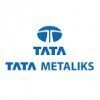
i
Rashmi Metaliks
Filter interviews by
Rashmi Metaliks Interview Questions and Answers
Rashmi Metaliks Interview Experiences
83 interviews found
I appeared for an interview in Feb 2025.
(2 Questions)
- Q1. Safely job planning to do it
- Q2. Jobe planning to complete within time frame.
(2 Questions)
- Q1. Jobe will be started as per plan and safety protocol to be followed
- Q2. Checked all routine maintenance.
Manager Mechanical Maintenance Interview Questions asked at other Companies
I applied via Campus Placement
(8 Questions)
- Q1. What is TTT DIAGRAM and its use
- Ans.
TTT diagram is a Time-Temperature-Transformation diagram used in materials science to understand the transformation of phases in a material.
TTT diagram shows the relationship between temperature, time, and phases in a material during cooling or heating.
It helps in predicting the microstructure and properties of a material based on its cooling rate.
TTT diagrams are commonly used in heat treatment processes for metals li...
- Q2. What is difference between ceramic and steel
- Ans.
Ceramic is a non-metallic material made from clay, while steel is a metallic material primarily made from iron and carbon.
Ceramic is non-metallic, while steel is metallic
Ceramic is made from clay, while steel is primarily made from iron and carbon
Ceramic is typically more brittle than steel
Steel is stronger and more durable than ceramic
Ceramic is often used for decorative purposes or in high-temperature applications, w...
- Q3. What is fatigue and what is creep in materials
- Ans.
Fatigue is the weakening of a material due to repeated loading, while creep is the gradual deformation of a material under constant stress.
Fatigue is the process of progressive and localized structural damage that occurs when a material is subjected to cyclic loading.
Creep is the time-dependent deformation of a material under constant load or stress.
Fatigue failure is often characterized by crack initiation and propaga...
- Q4. What are the different types of Steel making
- Ans.
Different types of steel making include basic oxygen furnace, electric arc furnace, and open hearth furnace.
Basic Oxygen Furnace (BOF) - uses oxygen to reduce the carbon content in the steel
Electric Arc Furnace (EAF) - uses electricity to melt scrap steel and produce new steel
Open Hearth Furnace - uses a fuel-air mixture to heat the steel and remove impurities
Other methods include Bessemer process, direct reduced iron,
- Q5. Why do we use alloying elements during Steel making and what are their applications
- Ans.
Alloying elements are used in steel making to improve properties like strength, hardness, corrosion resistance, and machinability.
Alloying elements are added to steel to enhance specific properties such as strength, hardness, toughness, and corrosion resistance.
Common alloying elements include chromium, nickel, manganese, molybdenum, and vanadium.
Chromium is added to improve corrosion resistance, nickel for toughness, ...
- Q6. What is SN curve ?
- Ans.
SN curve is a graphical representation of the relationship between stress and fatigue life of a material.
SN curve shows the number of cycles to failure (N) against the applied stress (S).
It helps in determining the fatigue life of a material under different stress levels.
Materials with higher fatigue strength have a steeper slope on the SN curve.
SN curves are commonly used in engineering to predict the durability of ma
- Q7. What is the composition of pigiron
- Ans.
Pig iron is an intermediate product of the iron industry, made by smelting iron ore in a blast furnace.
Pig iron is typically around 92-94% iron, with varying amounts of carbon, silicon, manganese, sulfur, and phosphorus.
It is brittle and not suitable for use in its raw form, but can be further processed into wrought iron or steel.
The carbon content of pig iron gives it a high carbon equivalent, making it ideal for cast...
- Q8. What is lever rule?
- Ans.
Lever rule is a principle used in material science to determine the relative amounts of two phases in a two-phase system.
Lever rule is used to calculate the fraction of each phase in a two-phase system based on the weight or volume percentages of the phases.
It is commonly used in metallurgy, ceramics, and other material science fields.
The lever rule equation is: L = (C - A) / (B - A), where L is the fraction of one pha...
Interview Preparation Tips
- Steel making
- Iron making
- Physical metallurgy
Top Rashmi Metaliks Graduate Engineer Trainee (Get) Interview Questions and Answers
Graduate Engineer Trainee (Get) Interview Questions asked at other Companies
I appeared for an interview in Jan 2025.
(2 Questions)
- Q1. Coal starvation?
- Q2. Hood temperature rise reason?
- Ans.
Hood temperature rise can be due to factors such as increased heat production, poor ventilation, or malfunctioning equipment.
Increased heat production from cooking appliances or other sources
Poor ventilation causing heat to accumulate in the hood area
Malfunctioning equipment such as a faulty exhaust fan or blocked vents
High ambient temperature in the kitchen area
(2 Questions)
- Q1. What is your salary?
- Ans.
I am currently earning a competitive salary based on my experience and qualifications.
My salary is based on my experience and qualifications
I am currently earning a competitive salary
I am open to discussing salary expectations during the interview process
- Q2. How much salary expectation?
- Ans.
Salary expectation is negotiable based on the responsibilities and benefits offered.
Salary expectation is based on the responsibilities of the position.
Consider the benefits package offered by the company.
Research industry standards for Deputy Manager salaries.
Be prepared to discuss your salary range during the interview.
Negotiate based on your experience and qualifications.
Interview Preparation Tips
Deputy Manager Interview Questions asked at other Companies
I appeared for an interview in Feb 2025, where I was asked the following questions.
- Q1. What is a blast furnace?
- Ans.
A blast furnace is a large industrial structure used for smelting iron ore into molten iron using high temperatures and chemical reactions.
Operates at temperatures around 1,500°C (2,732°F).
Uses coke as a fuel and reducing agent.
Iron ore is combined with limestone to remove impurities.
Produces pig iron, which can be further refined into steel.
Commonly used in steel manufacturing processes.
- Q2. What are the different types of steel?
- Ans.
Steel is an alloy of iron and carbon, with various types tailored for specific applications and properties.
Carbon Steel: Contains carbon as the main alloying element; examples include low, medium, and high carbon steels.
Alloy Steel: Contains additional elements like manganese, nickel, or chromium; used in tools and machinery.
Stainless Steel: Contains chromium for corrosion resistance; commonly used in kitchenware and m...
- Q3. What is metrology?
- Ans.
Metrology is the science of measurement, ensuring accuracy and precision in various fields, including manufacturing and quality control.
Metrology encompasses both theoretical and practical aspects of measurement.
It includes the calibration of instruments like scales and thermometers.
Examples include length measurement using calipers and mass measurement using balances.
Metrology is crucial in industries such as aerospac
Furnace Operator Interview Questions asked at other Companies
Rashmi Metaliks interview questions for popular designations
I applied via Campus Placement
(2 Questions)
- Q1. What is thermocouple
- Ans.
A thermocouple is a temperature sensor that consists of two different metals joined together to create a voltage proportional to the temperature difference.
Consists of two different metals joined together
Generates a voltage proportional to temperature difference
Commonly used in industrial temperature measurement applications
- Q2. What is rtd
- Ans.
RTD stands for Resistance Temperature Detector, a sensor used to measure temperature by correlating the resistance of the RTD element with temperature.
RTD is a type of temperature sensor that operates on the principle that the electrical resistance of a metal changes predictably with temperature.
Platinum RTDs are commonly used due to their high accuracy and stability.
RTDs are used in various industries including automo...
Interview Preparation Tips
1. What is RTD?
2.What is thermocouple?
3.What is plc?
4.What is DCS
5.Def of Isolator
6.what is flow transmitter?
7.what is orifice
Electrical Engineer Interview Questions asked at other Companies
(3 Questions)
- Q1. How can hit employees
- Ans.
By providing them with clear goals, regular feedback, opportunities for growth, and recognition for their hard work.
Set clear goals and expectations for employees to strive towards.
Provide regular feedback on their performance to help them improve.
Offer opportunities for growth and development through training and mentorship programs.
Recognize and reward employees for their hard work and achievements.
Create a positive ...
- Q2. Salary cut policy
- Q3. Overall Unorganised management systems
- Ans.
Unorganised management systems can lead to inefficiency, confusion, and missed deadlines.
Unorganised systems can result in tasks being overlooked or forgotten.
Lack of clear processes can lead to confusion among team members.
Missed deadlines and delayed projects are common outcomes of unorganised management systems.
Implementing a clear organizational structure and communication channels can help improve efficiency and p
Interview Preparation Tips
Administration Manager Interview Questions asked at other Companies
Jobs at Rashmi Metaliks
I appeared for an interview in Jul 2024.
(2 Questions)
- Q1. What do you meant by basic size?
- Ans.
Basic size refers to the theoretical size of a part before any tolerance is applied.
Basic size is the starting point for applying tolerances in manufacturing.
It is the size that the part must be in order to function properly.
For example, if a hole is specified to have a basic size of 10mm, it means that the hole must be exactly 10mm in diameter for the part to work correctly.
- Q2. What is nominal size?
- Ans.
Nominal size refers to the size of a part or component as designated by its name or label.
Nominal size is the size of a part as indicated by its name, but may not be the exact physical dimensions.
It is commonly used in manufacturing to simplify communication and standardize sizes.
For example, a 2x4 piece of lumber actually measures 1.5 inches by 3.5 inches.
(2 Questions)
- Q1. What is limits?
- Ans.
Limits refer to the maximum or minimum values that a machine or process can handle.
Limits are set to ensure the machine operates within safe parameters.
Exceeding limits can result in damage to the machine or product.
Examples include temperature limits, speed limits, and weight limits.
- Q2. What is basic metrology?
- Ans.
Basic metrology is the science of measurement, including the study of units, standards, and instruments used for measuring physical quantities.
Involves understanding units of measurement such as length, mass, and time
Includes knowledge of measurement standards and calibration procedures
Utilizes various instruments like rulers, calipers, micrometers, and gauges
Important for ensuring accuracy and precision in manufacturi
Interview Preparation Tips
Machine Operator Interview Questions asked at other Companies
Topic - Pellet Plant fundamental
(2 Questions)
- Q1. Related wagon Tippler hyd. Pump
- Q2. Related RMHS equipment
(1 Question)
- Q1. Salary negotiation
Senior Engineer Interview Questions asked at other Companies
(1 Question)
- Q1. TTT diagram, types of steel , difference between steel and iron
Metallurgical Engineer Interview Questions asked at other Companies
- Q1. Electrical questions Transformer,Motor etc
- Q2. Hr rounds don't worry
Interview Preparation Tips
Electrical & Instrumentation Engineer Interview Questions asked at other Companies
Top trending discussions






Rashmi Metaliks Interview FAQs
Some of the top questions asked at the Rashmi Metaliks interview -
The duration of Rashmi Metaliks interview process can vary, but typically it takes about less than 2 weeks to complete.
Tell us how to improve this page.
Rashmi Metaliks Interviews By Designations
- Rashmi Metaliks Senior Engineer Interview Questions
- Rashmi Metaliks Electrical Engineer Interview Questions
- Rashmi Metaliks Assistant Manager Interview Questions
- Rashmi Metaliks Graduate Engineer Trainee (Get) Interview Questions
- Rashmi Metaliks Deputy Manager Interview Questions
- Rashmi Metaliks Assistant Engineer Interview Questions
- Rashmi Metaliks Logistics Executive Interview Questions
- Rashmi Metaliks Electrical GET Interview Questions
- Show more
Interview Questions for Popular Designations
Rashmi Metaliks Interview Process
based on 106 interviews
Interview experience
Interview Questions from Similar Companies
Fast track your campus placements
Rashmi Metaliks Reviews and Ratings
based on 914 reviews
Rating in categories
|
Assistant Engineer
240
salaries
| ₹1.5 L/yr - ₹5 L/yr |
|
Engineer
174
salaries
| ₹2 L/yr - ₹6.1 L/yr |
|
Assistant Manager
168
salaries
| ₹4 L/yr - ₹10.5 L/yr |
|
Senior Engineer
140
salaries
| ₹2.5 L/yr - ₹8 L/yr |
|
Junior Engineer
133
salaries
| ₹1.4 L/yr - ₹4.5 L/yr |

SHYAM METALICS AND ENERGY

Jai Balaji Group

Electrotherm

Welspun Corp
- Home >
- Interviews >
- Rashmi Metaliks Interview Questions












